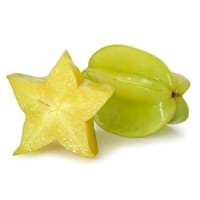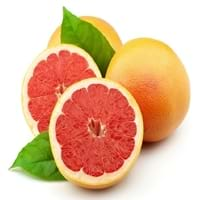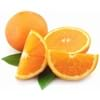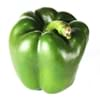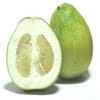Health Benefits
Cancer prevention, Heat stroke treatment
Arthritis prevention, Asthma treatment, Cancer prevention, Kidney stone treatment, Liver health
General Benefits
Anti oxidant properties, Anti-inflammatory properties, Digestive aid, Maintains healthy cholesterol level, Treatment of sore eyes
Anti oxidant properties, Boosts immune system, Cures cough, Eye care, Fights against infections, Helps in weight loss, Improves eye vision, Maintains healthy cholesterol level, Treatment of common cold
Skin Benefits
Anti-aging benefits, Heals sunburn, Skin rejuvenation
Anti-aging benefits, Brightens and lightens complexion, Reduces wrinkles, Treatment of dark spots
Hair Benefits
Promotes longer and healthier hair, Protects hair
Prevents hair loss, Protects hair, Regulates hair growth, Treatment of dandruff
Allergy Symptoms
NA
Abdominal pains, Decrease in blood pressure, Diarrhea, Dizziness, Eczema, Hives, Lightheadedness, Nausea, Runny nose, Swelling of mouth, tongue or lips, Vomiting
Side Effects
Nausea, Vomiting
Allergic reaction
Best Time to Eat
As a snack in the late afternoon, Eat the fresh ones, avoid mixing with any other foods, don't eat after meal., Strictly avoid empty stomach
As a snack in the late afternoon, Don't consume at night and before bed, Don't eat after meal, Morning time (before lunch), Strictly avoid empty stomach
Vitamin B5 (Pantothenic Acid)
Vitamin C (Ascorbic Acid)
Vitamin K (Phyllochinone)
Calories in Fresh Fruit with Peel
Not Available
Calories in Fresh Fruit without Peel
Not Available
Calories in Frozen Form
Not Available
Not Available
Calories in Dried Form
Not Available
Calories in Canned Form
Not Available
Not Available
Calories in Jam
Not Available
Calories in Pie
Not Available
Type
Tree fruit
Citrus, Tree fruit
Season
Autumn, Spring, Summer
All seasons
Varieties
King, Bell, Sri Kembangan, Arkin and Fwang Tung
Rio Star, Flame, Thompson and Star Ruby
Color
Golden yellow, Green
Pink, Red
Inside Color
Yellowish Green
Pink
Shape
Oval and Star(Cross section)
Round
Taste
Crisp, Juicy, Sweet
Sweet, Tangy
Origin
Sri Lanka
Barbados
Grows on
Not Available
Trees
Soil Type
Loam, Well-drained
Loam, Well-drained
Climatic Conditions
Moist, Warm to hot climate
Humid, Warm
Facts about
- When carambola is cut horizontally, it forms a star.
- It is believed that carambola helps to cure hangover.
- Entire carambola is edible, including its skin.
- 2 varieties of carambola are cultivated: tart & sweet.
- Grapefruit is used to protect wooden tools due to its anti-fungal properties.
- It grows in clusters as grapes & hence called as grapefruit.
- This fruit tastes delicious when paired with fish, e.g. in fish salads.
Top Producer
Taiwan
China
Other Countries
Australia, Guyana, India, Israel, Malaysia, Philippines, United States of America
Argentina, India, Israel, Mexico, South Africa, Sudan, Thailand, Turkey, United States of America
Top Importer
Europe
Japan
Top Exporter
Malaysia
United States of America
Botanical Name
Averrhoa carambola
Citrus paradisi
Synonym
Not Available
Not Available
Subkingdom
Tracheobionta
Tracheobionta
Division
Magnoliophyta
Magnoliophyta
Class
Magnoliopsida
Magnoliopsida
Order
Oxalidales
Sapindales
Family
Oxalidaceae
Rutaceae
Species
A. carambola
C. × paradisi
Generic Group
Not Available
Citrus fruit
Difference Between Carambola and Pink Grapefruit
We might think that Carambola and Pink Grapefruit are similar with respect to nutritional value and health benefits. But the nutrient content of both fruits is different. Carambola and Pink Grapefruit Facts such as their taste, shape, color, and size are also distinct. The difference between Carambola and Pink Grapefruit is explained here.
The amount of calories in 100 gm of fresh Carambola and Pink Grapefruit with peel is 31.00 kcal and Not Available and the amount of calories without peel is Not Available and 42.00 kcal respectively. Thus, Carambola and Pink Grapefruit belong to Low Calorie Fruits and Low Calorie Fruits category.These fruits might or might not differ with respect to their scientific classification. The order of Carambola and Pink Grapefruit is Oxalidales and Sapindales respectively. Carambola belongs to Oxalidaceae family and Pink Grapefruit belongs to Rutaceae family. Carambola belongs to Averrhoa genus of A. carambola species and Pink Grapefruit belongs to Citrus genus of C. × paradisi species. Beings plants, both fruits belong to Plantae Kingdom.
